There are a variety of downhill skis out there, making the task of finding the right pair for you feel like an enormous undertaking. But with a basic understanding of the different types of skis, how camber and rocker work and how to choose the right length for you, you'll be able to narrow down the selection and get out on the snow.
To choose the right skis, these are the key decision points:
- Choose the type of ski based on your preferred terrain: Your choices are all-mountain skis, all-mountain wide skis, freestyle skis, powder skis and backcountry skis. The type of skis you choose will be based on the type of skiing you plan to do.
- Find your preferred ski length: As a general rule, choose a ski length that comes up to between your chin and the top of your head. (Jump ahead to view our ski sizing chart).
- Confirm your ski dimensions support the type of skiing you like to do: Skinnier skis are better for carving turns on groomed runs, while wider skis provide better flotation in deep snow. (The type of ski you choose will inform these dimensions.)
- Understand how camber and rocker affect ski performance: If you stick to groomed slopes, skis with standard alpine camber or perhaps some tip rocker will be right for you. If you prefer deep snow, look for tip and tail rocker or full rocker for better flotation.
- Decide if you want integrated bindings or want to buy bindings separately: Skis with integrated bindings installed are convenient and ensure good performance. However, many intermediate and advanced skiers prefer skis without integrated bindings so they can pick ski bindings that meet their specific needs.
Video: Downhill Skis: How to Choose
Types of Downhill Skis
For an enjoyable day on the snow, it's best to match your skis to the conditions and areas on the mountain you like to ski. To make this easy for you, REI categorizes skis as all-mountain, all-mountain wide, freestyle, powder and backcountry.
All-Mountain Skis
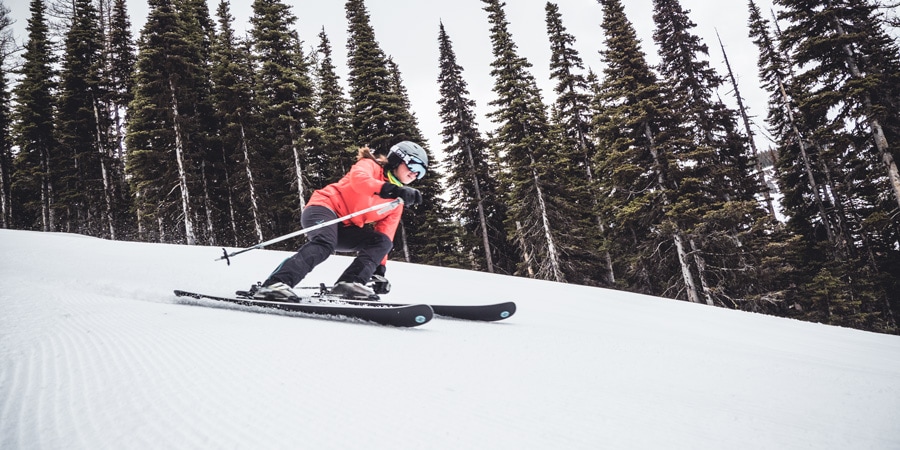
Best for groomed terrain (all levels, including moguls), or a mix of groomed and powder. Sometimes called carving skis, all-mountain skis are suited for all age groups and any experience level. Skis with narrow waists up to 85mm are typically considered "front-side skis" and are meant mostly for groomed conditions. All-mountain skis with 85mm-95mm are best for a mix of groomed and powder. Many all-mountain skis have deep sidecuts and rockered tips to make them easy to turn. They hold an edge on groomed routes and hard snow, and high-end models can satisfy performance expectations of expert-class skiers.
All-Mountain Wide Skis
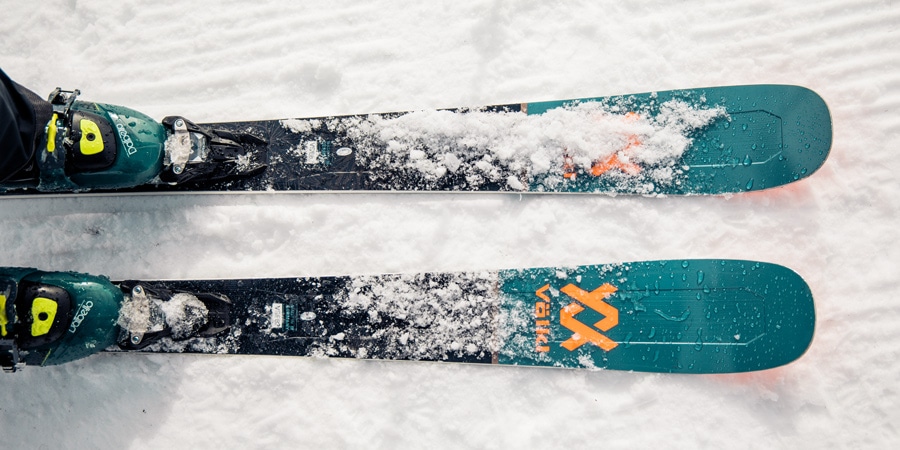
Best for groomed runs and powder. These skis can handle it all. Sometimes also called mid-fats or fats, these skis usually have wide waists of 90mm-109mm, which enhance flotation in soft snow without sacrificing too much agility on groomed slopes. They efficiently cut through sloppy snow and provide stability in crusty, variable snow.
Powder Skis
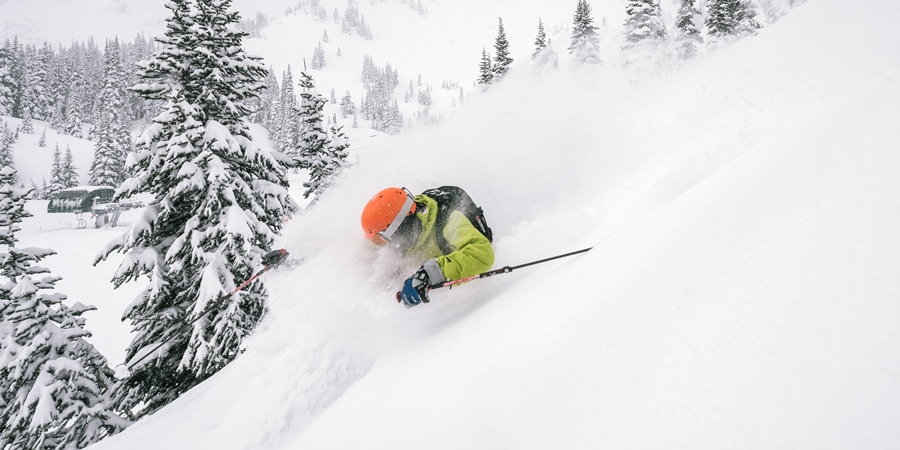
Best for powder, backcountry and occasional groomed runs. As the name implies, these skis perform best when skiing deep powder snow. Sometimes called super-fats, powder skis typically have waist widths of 109mm and higher for men's skis and 100mm and higher for women's skis to provide flotation and a surflike, playful feel. Many feature a fully rockered profile or rockered tips and tails to further boost flotation, enhance maneuverability and keep edges from catching. Be aware that they're not built for precise turns on groomed runs, but they are absolutely the best choice for a memorable day when the powder is deep.
Backcountry Skis
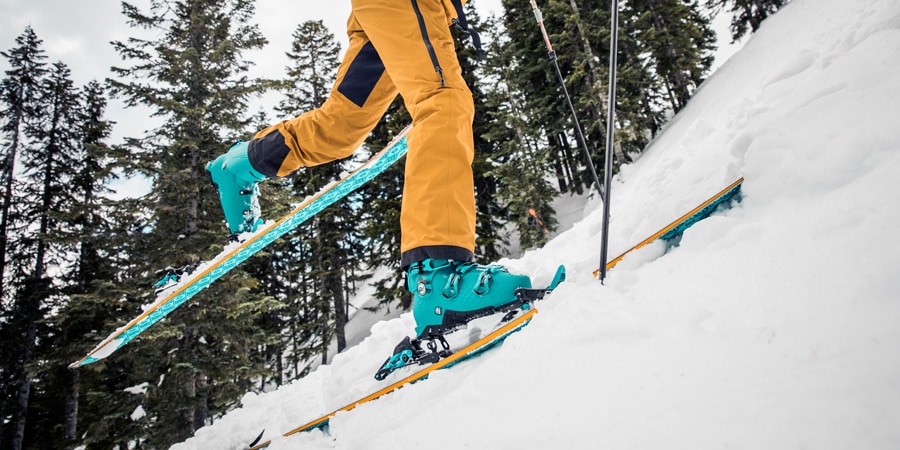
Best for untracked wilderness terrain, powder and groomed runs. Backcountry skis open the wild, untracked areas of a mountain to you. With the help of climbing skins, you can ski uphill to reach fresh, untracked snow and then remove the climbing skins to enjoy the ride down. With this freedom comes the responsibility of acquiring the mountaineering and avalanche awareness skills necessary for ensuring your own safety.
Backcountry skis are typically lighter than alpine skis, which is advantageous when climbing. They feature waist widths of approximately 80mm-120mm: Narrower waists make turning easier when skiing hard snow; wider waists work better in powder. Backcountry skis can be used for telemark or alpine touring skiing; the choice depends on what style bindings you put on the skis.
Specific Downhill Skis
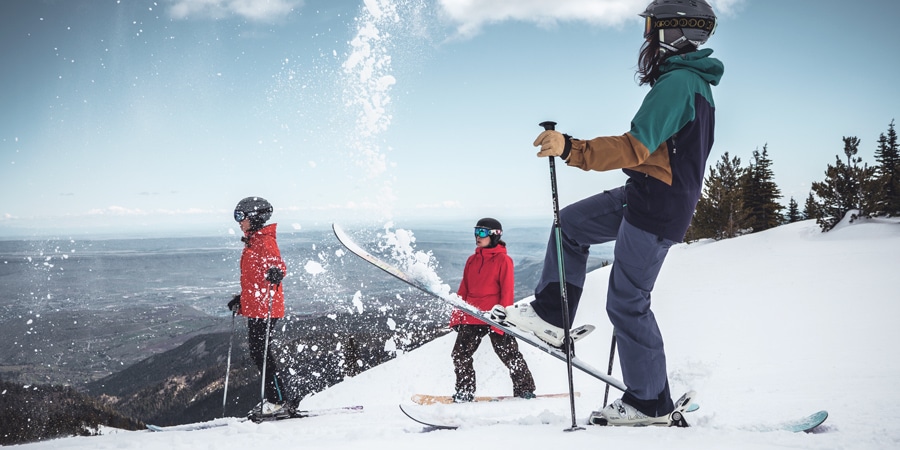
Women's Downhill Skis
Women-specific skis share many of the design attributes of men's skis but they are typically shorter and lighter to match a skier who is also usually shorter and lighter. Some expert-level skis are only sold as unisex or men's skis but are available in a range of sizes to accommodate skiers of any gender. Needless to say, you can ski just about any ski that fits or suits you, whether it's designed to be women-specific or not.
Kids' Downhill Skis
It may make sense to buy clothes that kids can "grow into," but that strategy does not pay off for aspiring young skiers. Equip them with downhill skis that are a good fit for their current size. For the very young (under 6), tips in general should not quite reach their chins (or be 6 to 8 inches below the tops of their heads). For youth (under 12), tips should touch a part of their middle or upper face. Kids can always ski a shorter ski but may have problems with a long ski. When in doubt, go short.
Kids' downhill skis often include bindings.
Downhill Ski Length
It's important to get a pair of skis that are the right length for you. A pair that is too long can feel unwieldy and difficult to control. Too short, and they might feel slow or too squirmy.
When choosing ski length, it's easiest to start by basing the decision on your height and ability. Once you've done that, you can refine your choice using other criteria, such as ski type, terrain, snow conditions and personal preference.
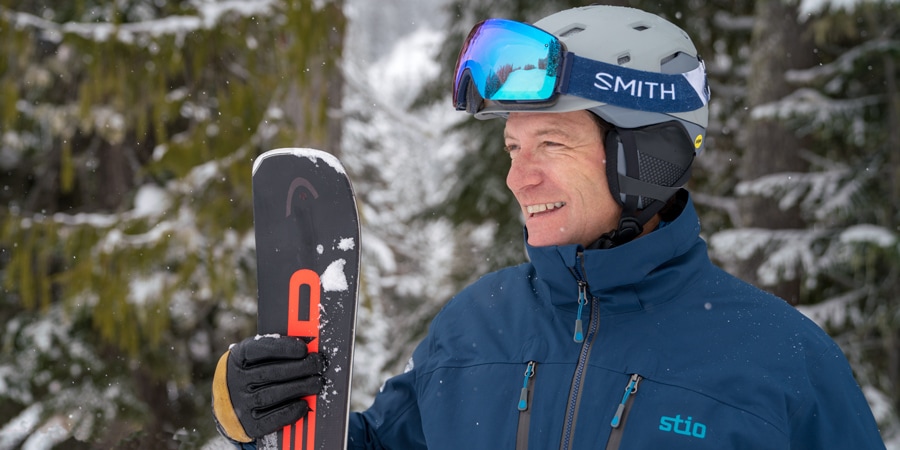
In general, with the tails of your skis on the ground, the tips should touch you somewhere between your chin and the top of your head. Skis on the shorter end of that spectrum appeal more to novices because they're easier to turn and aren't too fast. Veteran skiers often prefer skis on the longer end for a faster ride.
Ski Sizing Chart
Skier Height (ft. in. / cm) | Beginner Length (cm) | Intermediate Length (cm) | Expert Length (cm) |
|---|---|---|---|
4'6" / 137 | 125 | 135 | 140 |
4'8" / 142 | 130 | 140 | 145 |
4'10" / 147 | 135 | 145 | 150 |
5'0" / 152 | 140 | 150 | 155 |
5'2" / 157 | 145 | 155 | 165 |
5'4" / 163 | 150 | 160 | 170 |
5'6" / 168 | 155 | 165 | 175 |
5'8" / 173 | 160 | 170 | 180 |
5'10" / 178 | 165 | 175 | 185 |
6'0" / 183 | 170 | 180 | 190 |
6'2" / 188 | 175 | 185 | 195 |
6'4" / 193 | 180 | 190 | 200 |
Other sizing considerations:
- Skier weight: If you have a slight build for your height, consider choosing skis on the shorter end of the range. If you have a larger frame, think about moving up to longer skis. Some ski manufacturers provide skier weight recommendations; look in the Specs section on REI.com for this information.
- Skiing style: Skiers who like to make short, quick turns might opt for shorter skis. If you want to ski fast or make long sweeping turns, consider a longer pair of skis.
- Terrain: If your favorite hill is dominated by narrow, twisty trails, look at shorter skis. They're better at quickly maneuvering into tight turns. If you only ski open slopes or mostly ski ungroomed snow, then consider longer skis.
- Personal preference: If you know you prefer longer or shorter skis, keep that in mind when choosing length.
- For children under age 6, stand skis up beside the child; the tips should not quite reach their chin.
- For children 6 to 12, stand skis up beside the child; the tips should touch a part of their face.
Downhill Ski Dimensions
A ski's dimensions are determined by measuring (in millimeters) its width in three places: at its two widest points, the tip and tail, and at its narrowest, the waist. Tip/waist/tail measurements are usually separated by slashes and displayed as, for example, 131/98/119 (tip-waist-tail).

Waist: Of the three dimensions, waist width is the most critical; it determines how the ski reacts. Ski widths typically range from 60mm to 100mm. Narrow waists (smaller numbers) allow you to establish an edge sooner, resulting in speedy, usually nimble skis that are ideal for groomed runs. They can also shift from edge to edge more quickly. Wide waists (larger numbers) deliver more surface area (more area to make contact with snow), which makes them preferable in soft snow, powder and backcountry conditions. You'll often find the waist width incorporated into the name of the ski.
Tip: Also called the "shovel," the tip initiates turns. A wide tip (roughly 120mm and higher) floats more easily on soft snow. On hard snow, wider tips matched with narrower waists create a ski best suited for short-radius carved turns.
Tail: The back end of a ski helps sustain turns and usually matters more to fast-turning experienced skiers. (Their usual preference: wider tails.) When carving tight, rapid turns, a wider tail resists sideways skids and sustains speed. Others may prefer narrower tails, which are better for wide, sweeping turns.
Sidecut Radius
The relationship between the tip, waist and tail dimensions of any ski creates an arc. Now, imagine if you were able to take a pencil and draw a giant circle that completes that arc. The radius of that circle is what's known in the skiing world as sidecut radius (or turning radius).
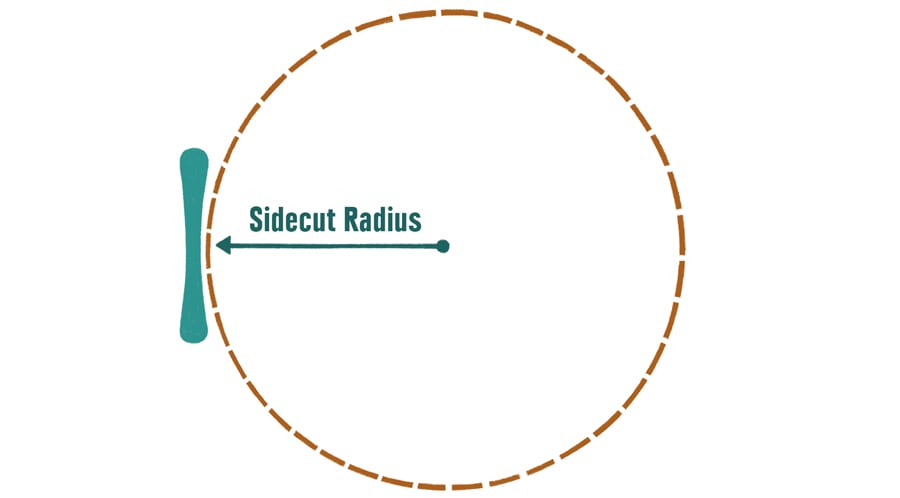
The sidecut radius of a ski is typically expressed in meters and gives you an idea of whether a ski is better at making tight turns or big arcing ones. A ski with a narrow waist in relation to its tip and tail will have a shorter sidecut radius (a smaller number) and can make tight, short-radius turns. On the flipside, a ski with a wide waist in relation to its tip and tail has a longer sidecut radius, which means it's better at bigger, long-radius turns.
In actuality, you can make tight turns and big arcing ones with the same ski but knowing the sidecut radius can give you an idea of what kind of turns the ski really excels at. In general, skis with low sidecut-radius numbers (low to mid-teens) are better for making tight, short-radius turns. Higher numbers (upper teens and beyond) indicate skis better suited for long-radius turns and fast descents.
This chart gives you an idea of turning radius you're likely to find on different types of skis:
Turning Radius | Type of Skis |
|---|---|
<17m | All-Mountain |
17 - 22m | All-Mountain; All-Mountain Wide; Backcountry |
>22m | All-Mountain Wide; Backcountry; Powder |
Downhill Ski Camber and Rocker
If you set a ski down on the snow and look at it from the side, you'll notice certain things about the shape. With many skis, you'll see that the middle of the ski rises off the snow. With other skis, you'll see that the middle of the ski stays flat against the snow. This difference is the basic distinction between skis with camber and skis with rocker.

Camber is the traditional ski design. It features a continuous arc (or bow) that runs for much of the length of the ski, causing the middle of the ski to rise off the snow. When a skier stands on a ski, it flattens due to the skier's weight. At that point the entire length of the base can provide stability and the ski's metal edge can initiate turns. As a skier moves from turn to turn, camber provides the energy for a ski to snap back from turns, creating a sensation of "liveliness." In short, camber is the built-in spring that makes a ski lively.

Rocker is a newer design that is basically the opposite of camber and is sometimes called reverse camber or negative camber. The side profile of a rockered ski resembles the upturned rails of an old-school rocking chair. On a flat surface, the midsection of a rockered ski will rest on the ground while its tips and tails rise off the ground much earlier than they do for a cambered ski. Rocker offers improved flotation in powder and offers greater maneuverability.
There are different degrees of camber and rocker; when you're shopping on REI.com, you'll see skis categorized into four categories:
- Standard alpine: This is the original design for skis, featuring a middle section that rises off the snow slightly. The points at which the base of the ski contacts the snow are typically fairly close to the tip and tail of the ski. Standard alpine camber provides a stable and controlled ride on hard snow, but can be challenging in deep, soft snow.
- Tip rocker: This design features standard camber throughout the middle and tail of the ski, but toward the tip the point at which the base of the ski last contacts the snow before rising is usually farther back compared to the contact point on standard alpine skis. Tip rocker is intended to give a ski better flotation in soft snow while maintaining the liveliness and control of camber. Many all-mountain and all-mountain wide skis have tip rocker.
- Tip and tail rocker: With rockered tips and tails, these skis provide very good performance in deep snow, while the cambered middle section maintains some of the feel of a cambered ski for good edge hold and energy.
- Full rocker: Full rocker is the exact opposite of camber. When you put a ski with full rocker on the snow you'll see that the center of the ski is entirely in contact with the snow and that the tip and the tail rise dramatically off the snow. This design is intended to provide superb float in deep, soft snow but can make carving turns on hardpack snow challenging. You typically find full rocker only on really wide skis.
Downhill Ski Bindings
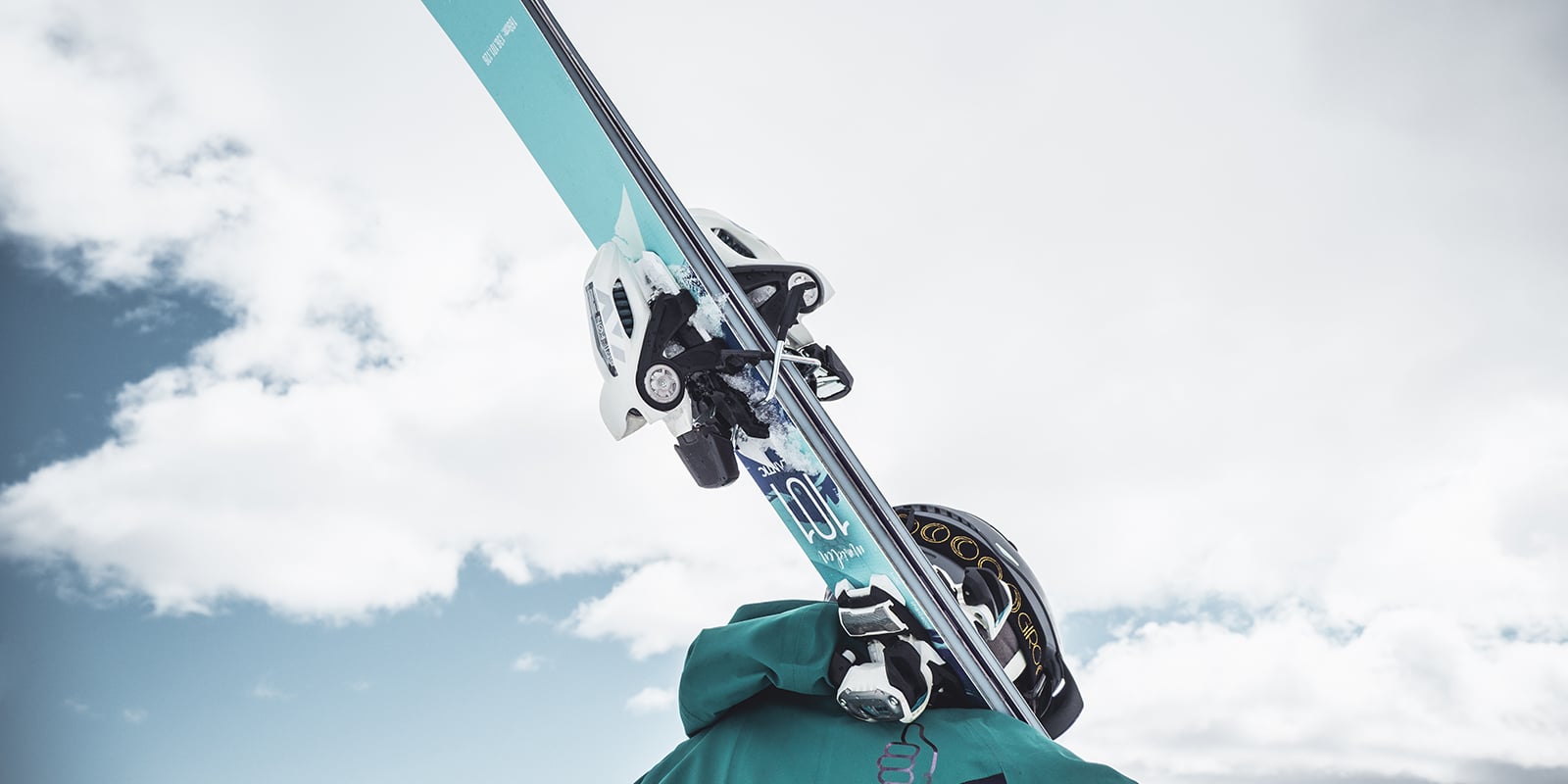
You can learn all about bindings in our article, How to Choose Downhill Ski Bindings, but one basic point to be aware of when shopping for skis is that some skis come with bindings and some don't.
Integrated bindings: Skis that come packaged together with bindings are a popular choice for many all-mountain skiers. Skis with integrated bindings can be desirable because the ski manufacturer has already determined that the bindings are a good match for the skis so you can be assured that they will provide good flex, edge hold and turning.
Nonintegrated bindings are still favored by many intermediate and advanced skiers seeking specific performance features or higher DIN release settings.
